Guide
What to Do If You’re Stuck With a Legacy GRC Solution

Introduction
Governance, risk, and compliance (GRC) solutions are essential for organizations to manage regulatory requirements, mitigate risks, and ensure effective governance. Many organizations are stuck with legacy GRC solutions that no longer meet their evolving needs. While legacy solutions can be a good fit for organizations that need a platform that covers hundreds of focus areas, these systems can hinder efficiency, scalability, and compliance effectiveness for organizations looking for a more modern, boutique solution for specific focus areas.
This guide explores what to do if you’re stuck with a legacy solution and looking to transition to a more agile, yet robust GRC solution.
Common challenges with legacy GRC solutions
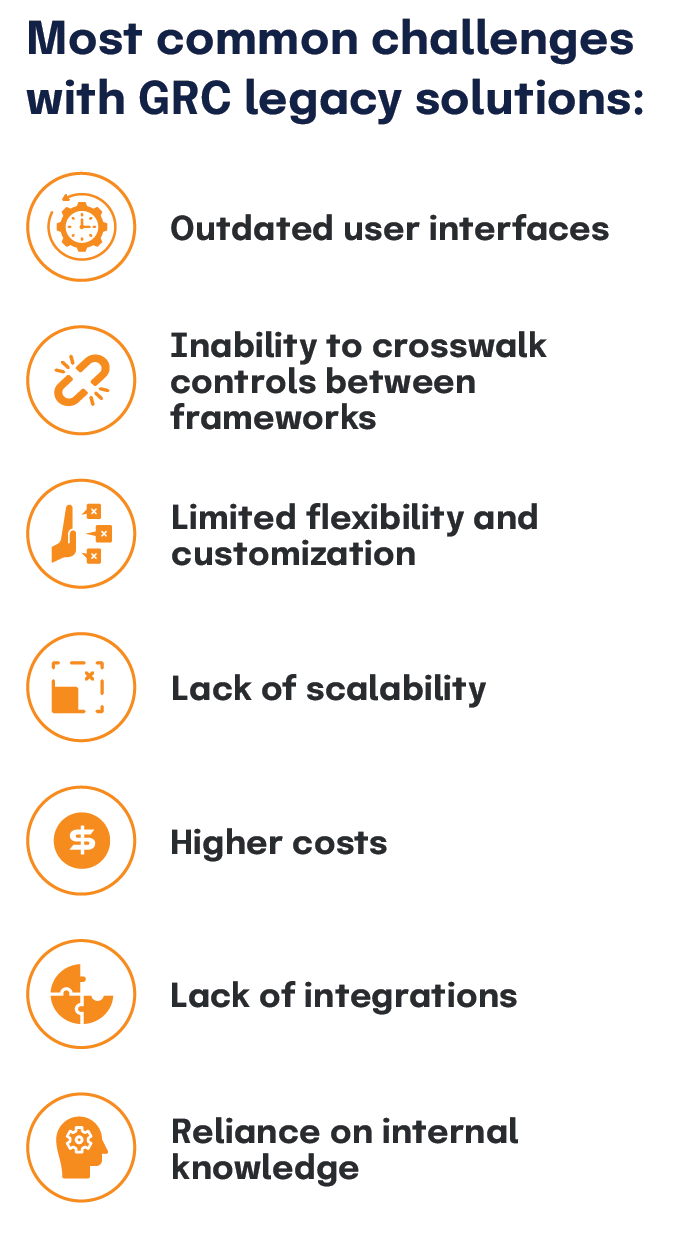
Outdated user interfaces
One of the more glaring issues with legacy solutions is that they often have clunky, outdated user interfaces that are unintuitive, making it difficult for users to easily navigate the platform. This can lead to frustration and increased time spent learning the platform, resulting in decreased productivity.
Inability to crosswalk controls between frameworks
Crosswalking controls between different compliance frameworks is a critical capability for modern GRC programs, especially for organizations that operate in multiple jurisdictions or industries. Unfortunately, many legacy systems lack this capability, forcing companies to manage each framework separately. This not only increases the workload but also raises the risk of errors and inconsistencies.
Limited flexibility and customization
Legacy GRC solutions were built with a one-size-fits-all mindset. These systems are typically rigid and lack the flexibility needed to adapt to unique organizational needs. This approach to software makes it challenging to customize controls or frameworks to align with specific compliance requirements, often resulting in a cumbersome and time-consuming process.
Lack of scalability
As organizations grow and expand into new markets, legacy GRC solutions struggle to scale accordingly. Adding new users, expanding control operations, or integrating additional compliance frameworks can be complex and costly.
Higher costs
Due to the custom nature of legacy solutions, maintaining and upgrading legacy systems can be costly. Organizations may need to invest in additional resources to keep the system running, manage customizations, and address security vulnerabilities.
Lack of integrations
These systems usually have limited integration capabilities, making it difficult to connect with other essential business tools and systems. This can result in data silos, redundant efforts, and increased risk.
Reliance on internal knowledge
Legacy systems often rely heavily on internal knowledge, where only a few individuals understand how the system works and how to manage it. This poses a significant risk if those individuals leave the organization or if their knowledge is not properly documented.
Do modern GRC solutions solve the common challenges of legacy GRC solutions?
Modern GRC solutions provide user-friendly interfaces, robust integration capabilities, and advanced automation features that significantly improve compliance processes and risk management. They offer customizable frameworks, real-time risk monitoring, and scalable control operations, addressing the limitations of legacy systems.

Increasing complexity of compliance and risk management
The regulatory landscape is continuously evolving, with new regulations and standards emerging regularly. Organizations must manage a growing number of compliance requirements and associated risks, necessitating more advanced and adaptable GRC solutions.
The importance of having a future-proof compliance solution
Modern GRC solutions are designed to address the complexities of today’s regulatory environment. They offer flexibility, scalability, and automation capabilities that enable organizations to meet current and future compliance needs efficiently and effectively.

Hyperproof: What a modern GRC platform provides
Scalable control operations
Hyperproof seamlessly scales a common control set across your organization’s multiple products to minimize control redundancy. With Hyperproof, you can automate most of your controls and orchestrate the rest, making it easy for employees to complete their compliance tasks using tools they already use. Large, complex enterprises like Nutanix reduce their costs by standardizing control operations across dozens of frameworks.

Integrated risk operations
Hyperproof elevates organizational resilience by integrating control health data with multiple risk registers. This allows compliance managers to continuously monitor their real-time risks, quickly resolve issues, and report mitigation efforts to relevant stakeholders.
Avoid duplicative work by linking controls to risks, documenting each control’s mitigation strength, and viewing up-to-date risk status in real-time dashboards. Prioritize which risks need attention and link controls to risks in the risk register, document each control’s mitigation strength in percentage, and view residual risks. You can also specify how a control would reduce the risk in terms of likelihood or impact
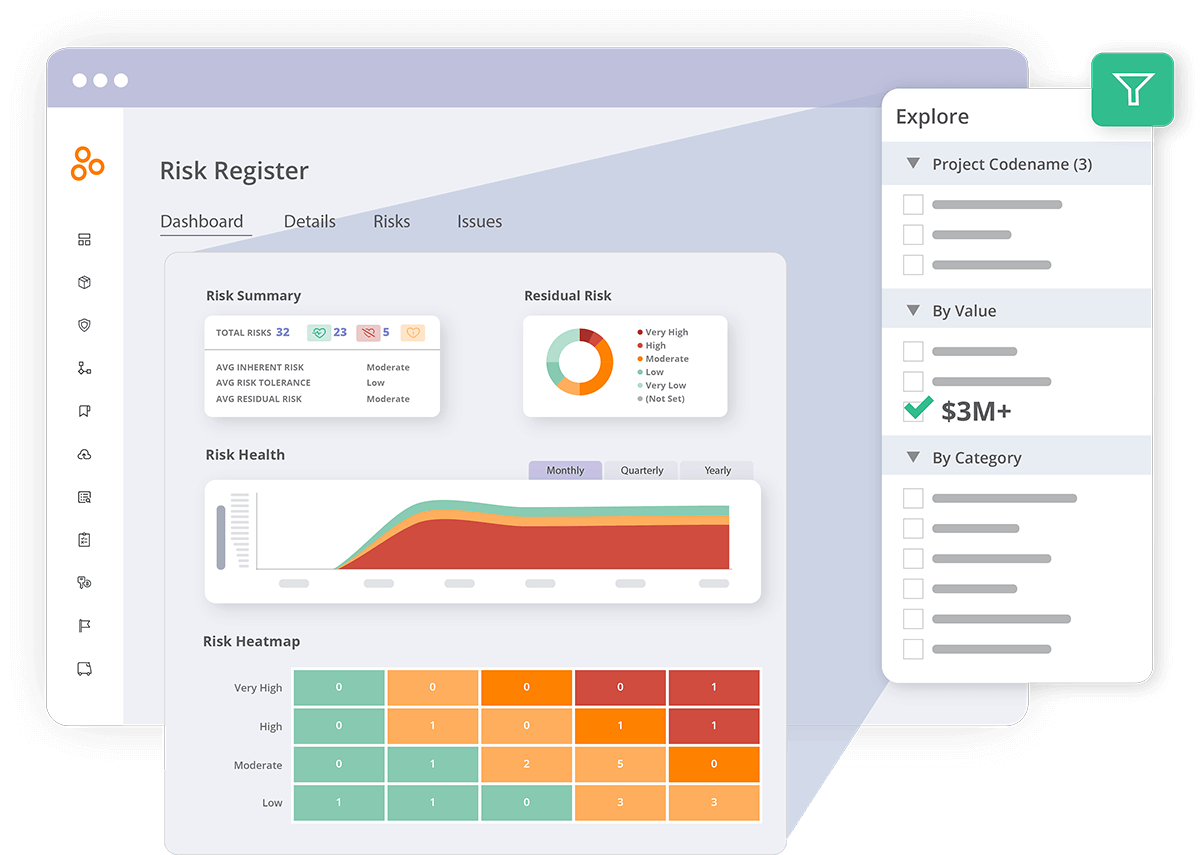
Adaptive control testing
Hyperproof ensures your standards are maintained across your organization by automating workflows to test control validity, hold control owners accountable, and remediate issues. Unique to Hyperproof, our no-code automation workflows allow your operators to design efficient and repeatable processes.
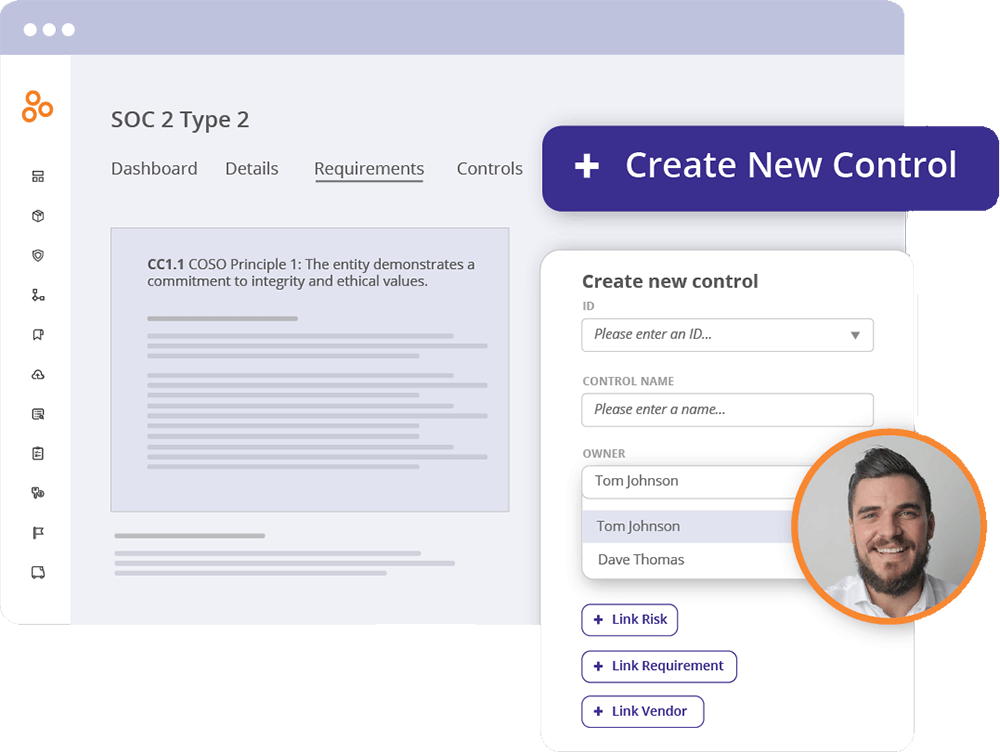
A robust framework library
100+ out-of-the-box framework templates
Hyperproof offers over 100+ out-of-the-box framework templates that simplify the implementation process. These pre-built frameworks provide a solid foundation to make getting started simple and fast, reducing the time and effort required to achieve compliance.
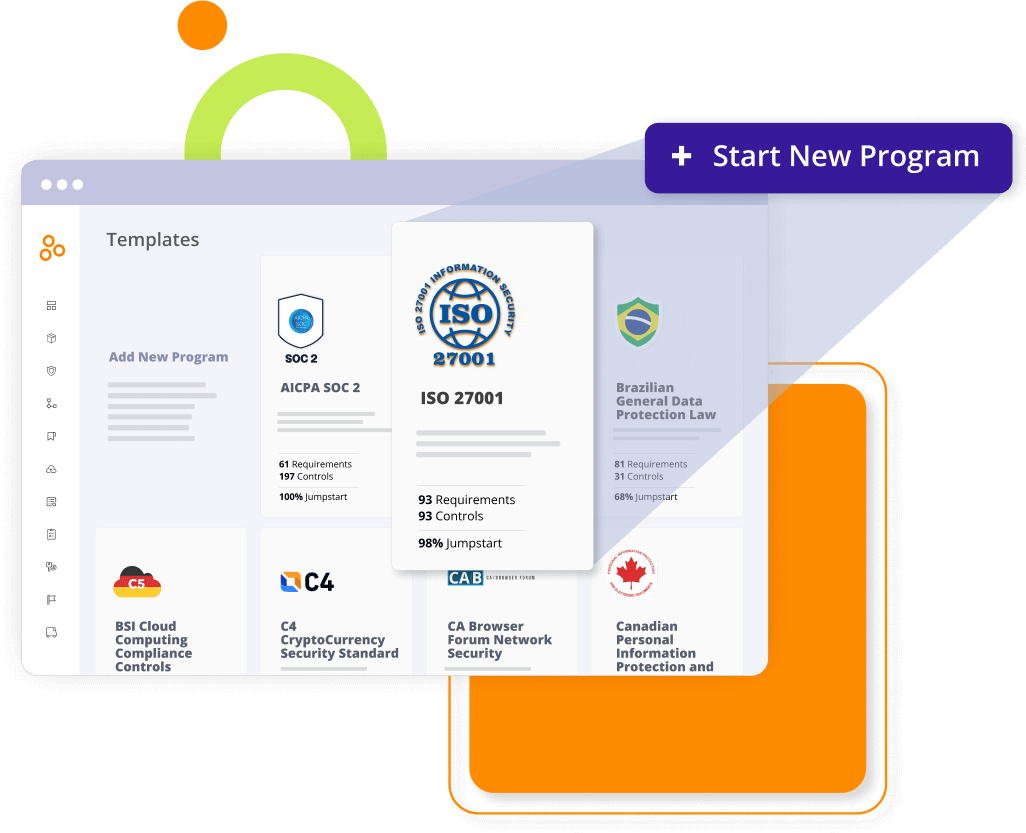
Tailor controls to various compliance frameworks
Hyperproof allows organizations to tailor controls to meet the requirements of hundreds of compliance frameworks. This flexibility ensures that the GRC processes unique to your organization align with specific regulatory needs.
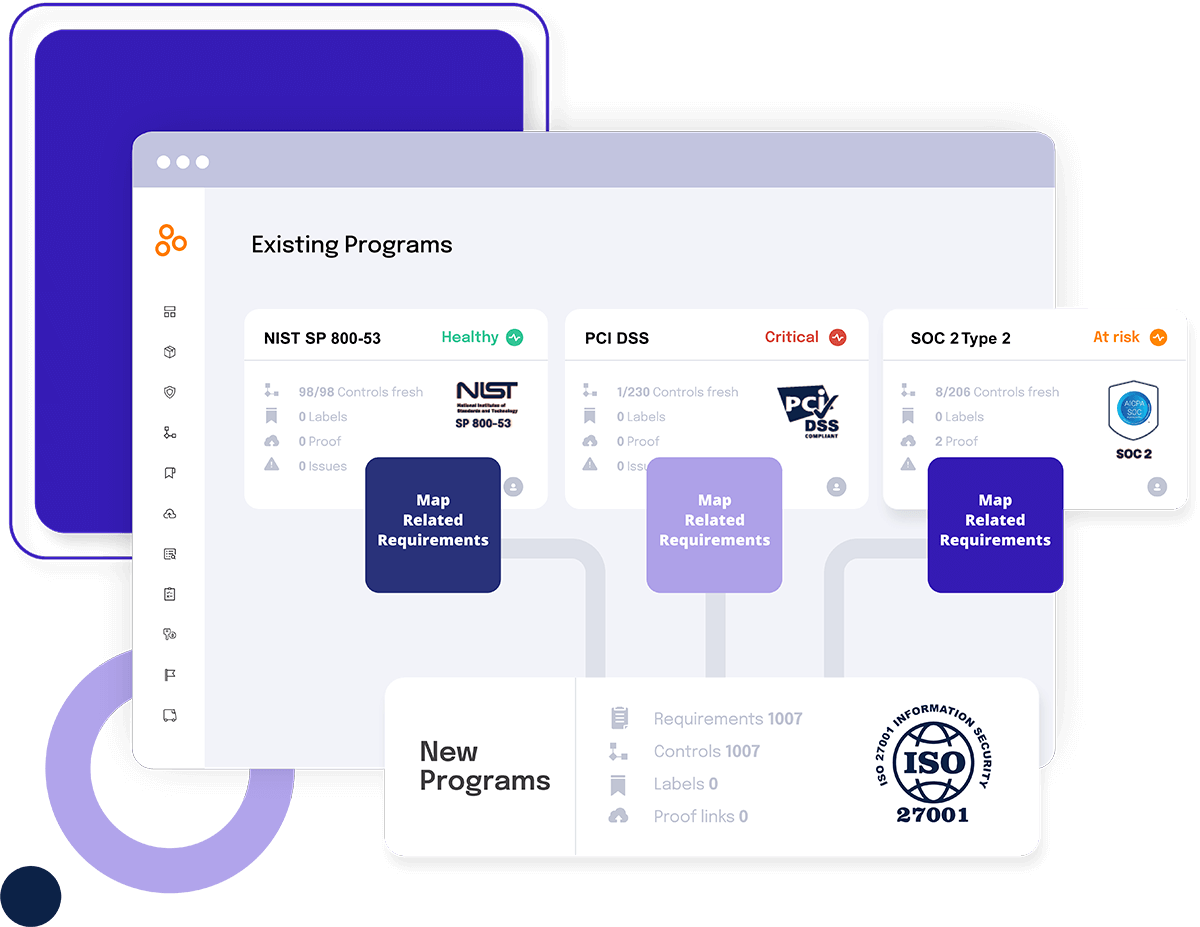
Create and manage custom frameworks
Organizations can upload custom frameworks to Hyperproof with just a .CSV file. This quick turnaround time ensures that compliance needs are met promptly and the niche frameworks your company needs are handled.
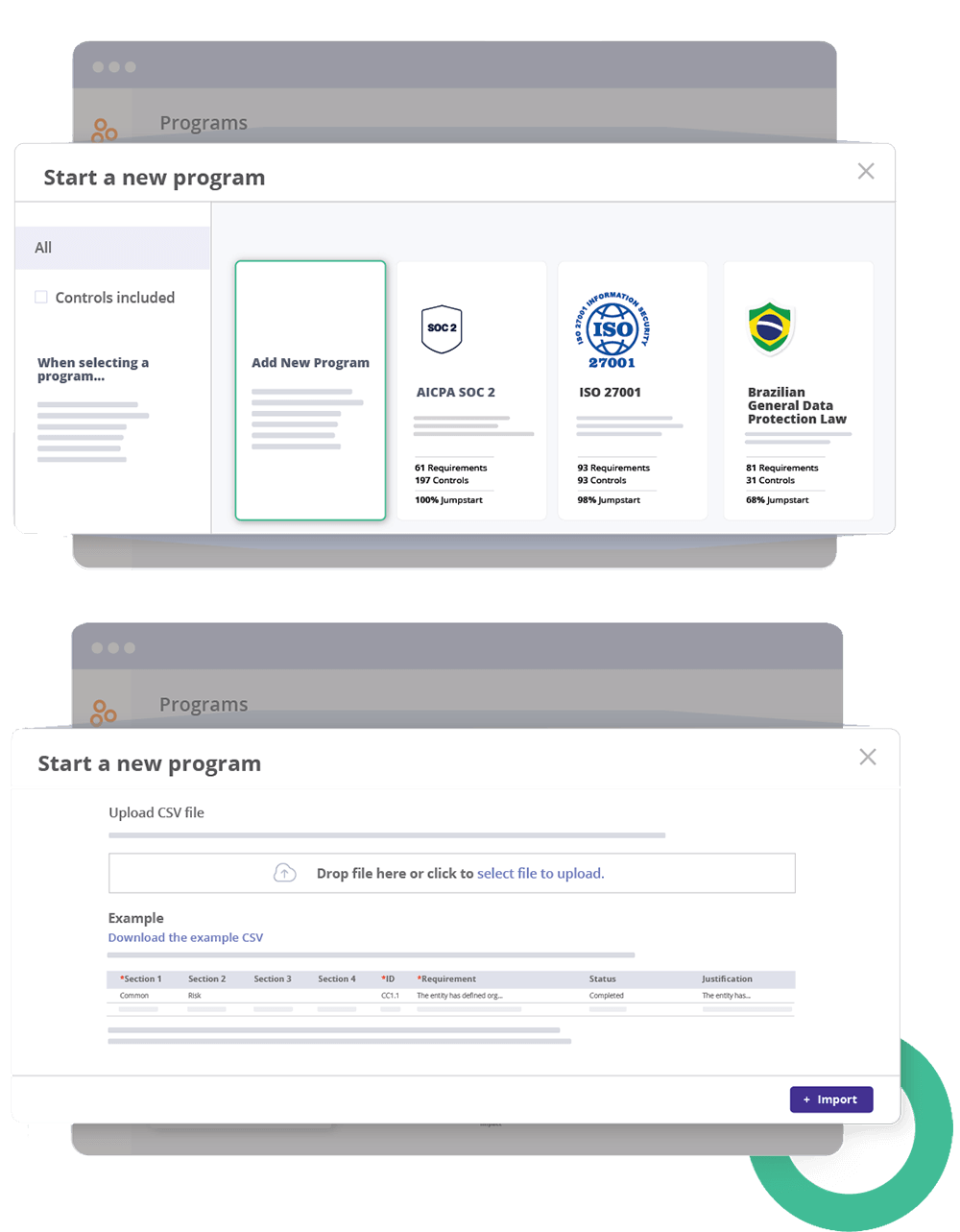
Real-time risk monitoring
Hyperproof’s real-time risk monitoring capabilities enable organizations to continuously track and assess risks. This proactive approach helps in early detection and resolution of potential issues, enhancing overall compliance and risk management.
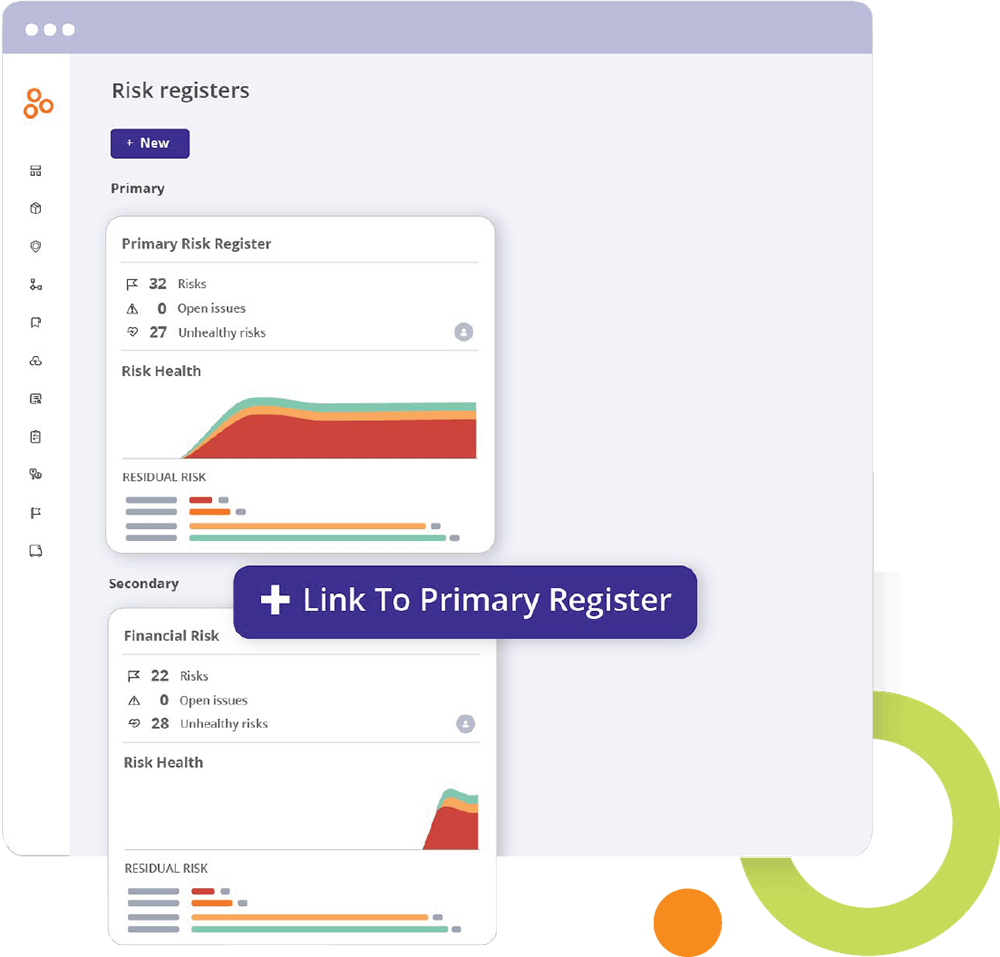
Connect controls to risks
Seamlessly connect controls to risks for integrated control health data that provides a holistic view of the organization’s risk landscape. This enables organizations to resolve issues quickly and easily report on mitigation efforts.

Modern, well-designed UI
A user-friendly, intuitive interface
Hyperproof boasts a modern, well-designed user interface that enhances user experience and efficiency. Its intuitive design makes it easy for users to navigate and perform tasks, reducing the learning curve and increasing productivity.
A modern UI improves user experience by providing a clean, organized, and visually appealing interface. This leads to higher user adoption rates, improved efficiency, and better overall compliance management.

Time-to-value
Seamless and easy implementation

Hyperproof offers a streamlined implementation process, allowing organizations to start realizing the benefits of the platform faster. Its user-friendly setup and configuration options make it easy to get started. Hyperproof’s Customer Success team works with you to ensure you have all the resources you need to mitigate risk and become continuously compliant. With Hyperproof, you’re never more than a call, message, or email away from fast and responsive support and training.
Faster time-to-value
Our easy implementation is not the only thing that delivers faster time to value compared to legacy systems. With Hyperproof’s modern, easy-to-use architecture and automation capabilities, organizations can achieve compliance more quickly and efficiently, reducing the overall cost of compliance.
Prepare for audits faster
With Hyperproof, preparing for an audit is faster and more streamlined. The platform’s comprehensive audit readiness features include a seamless connection between controls and audit requests, the ability to easily collaborate with your auditor in Hyperproof’s dedicated audit space, a comprehensive audit dashboard that allows you to know exactly what needs to be done, what’s being reviewed, and what’s completed. These ensure that organizations are always prepared, reducing the stress and effort associated with audits.
Transitioning from a legacy solution to Hyperproof
Preparation
Before you start the technical aspects of transitioning to Hyperproof, it is important to prepare by evaluating your organization’s current compliance processes, identifying any pain points, and defining objectives and success criteria for your GRC program.
Evaluate your organization’s current compliance processes
The first step in the preparation process is to evaluate your current compliance processes. This involves assessing how your organization currently manages compliance tasks, identifies risks, and adheres to regulatory frameworks. Throughout this step, you should do the following:
1. Identify inefficiencies
Look for areas where your current system is causing delays, creating bottlenecks, or leading to errors. Some common pain points to look for in legacy solutions are cumbersome workflows, manual processes, and a lack of automation.
2. Assess data quality
Evaluate the quality and accuracy of the data currently stored in your legacy system. Data integrity is crucial for risk management efforts, and transitioning to a new platform is an opportunity to clean it up.
3. Gather feedback from users
Meet with the individuals who regularly use your current system to understand their workflows and identify pain points. Their knowledge will be valuable in setting up a more efficient system in Hyperproof.
Once you have evaluated your current processes, identify areas where Hyperproof can make the most significant impact and ensure your organization maximizes the value of implementing Hyperproof.
Define success criteria and objectives for implementing the Hyperproof platform
After you’ve identified the pain points in your current compliance processes, the next step is to define clear objectives and success criteria for implementing Hyperproof. A good template to follow for setting objectives is the SMART goal template: objectives should be specific, measurable, achievable, relevant, and time-bound. Examples of what this could look like include:

30% reduction in manual processes
Reduce the time spent on compliance tasks by 30% within the first six months of using Hyperproof

85% in compliance errors
Achieve an 85% reduction in compliance-related errors within the first quarter after implementation

40% increase in user satisfaction
Improve user satisfaction by 40% by surveying users pre- and post implementation

Migrate data from your legacy system to Hyperproof
This step is arguably the most important. The accuracy and completeness of the data you transfer to Hyperproof will play a role in the overall success of the system.
3 steps for downloading assets from legacy solutions
This process typically involves downloading assets such as controls, tasks, labels, and audit requests from the old system. The specific steps for downloading these assets will vary depending on the legacy system you’re using, but the general process includes three key steps:
1. Identify the data to be migrated
Determine which data sets need to be transferred to Hyperproof. This might include compliance frameworks, risk registers, control records, and evidence documentation.
2. Export data from the legacy system
Use the export functionality of your legacy GRC system to download the required data. This data is typically exported in formats such as .CSV or Excel files.
3. Ensure data integrity
After exporting the data, verify its accuracy and completeness. Check for missing or corrupted records that could cause issues during the migration process.

Tips for cleaning and organizing data before migration
Once you’ve exported your data, it’s essential to clean and organize it before uploading it into Hyperproof. This step helps ensure that the data in your new system is accurate, consistent, and ready for use. Here are some tips for effective data cleaning and organization:
How to upload data to Hyperproof
After cleaning and organizing your data, you’re ready to upload it into Hyperproof. The platform provides a straightforward process for data migration, which typically involves the following four steps:
1. Prepare .CSV files* for upload
Ensure that your data is formatted correctly in .CSV files, with each column corresponding to a specific field in Hyperproof. Common data types to upload include controls, tasks, labels, and audit requests.
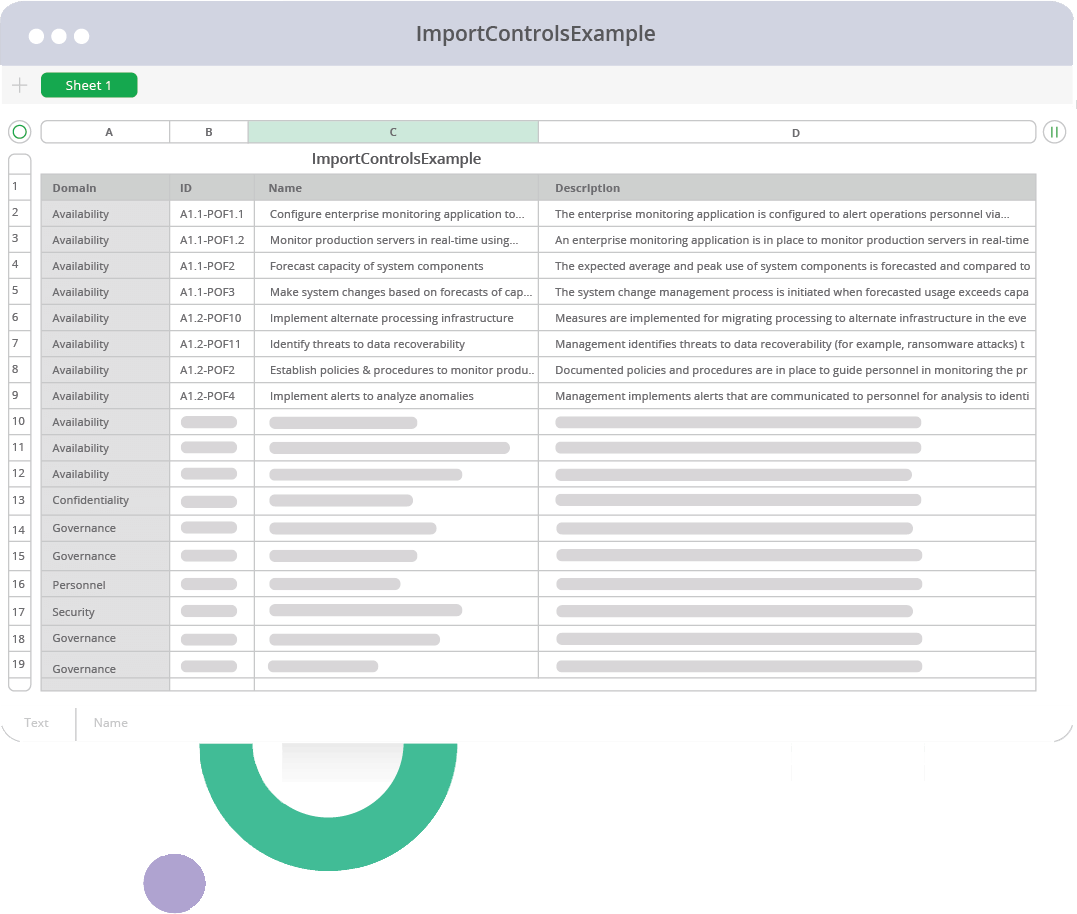
2. Upload .CSV files to relevant areas
Use Hyperproof’s import functionality to upload the .CSV files to the appropriate areas within the platform. For example, you might upload control records to the Controls module and risk data to the Risk Registers module.
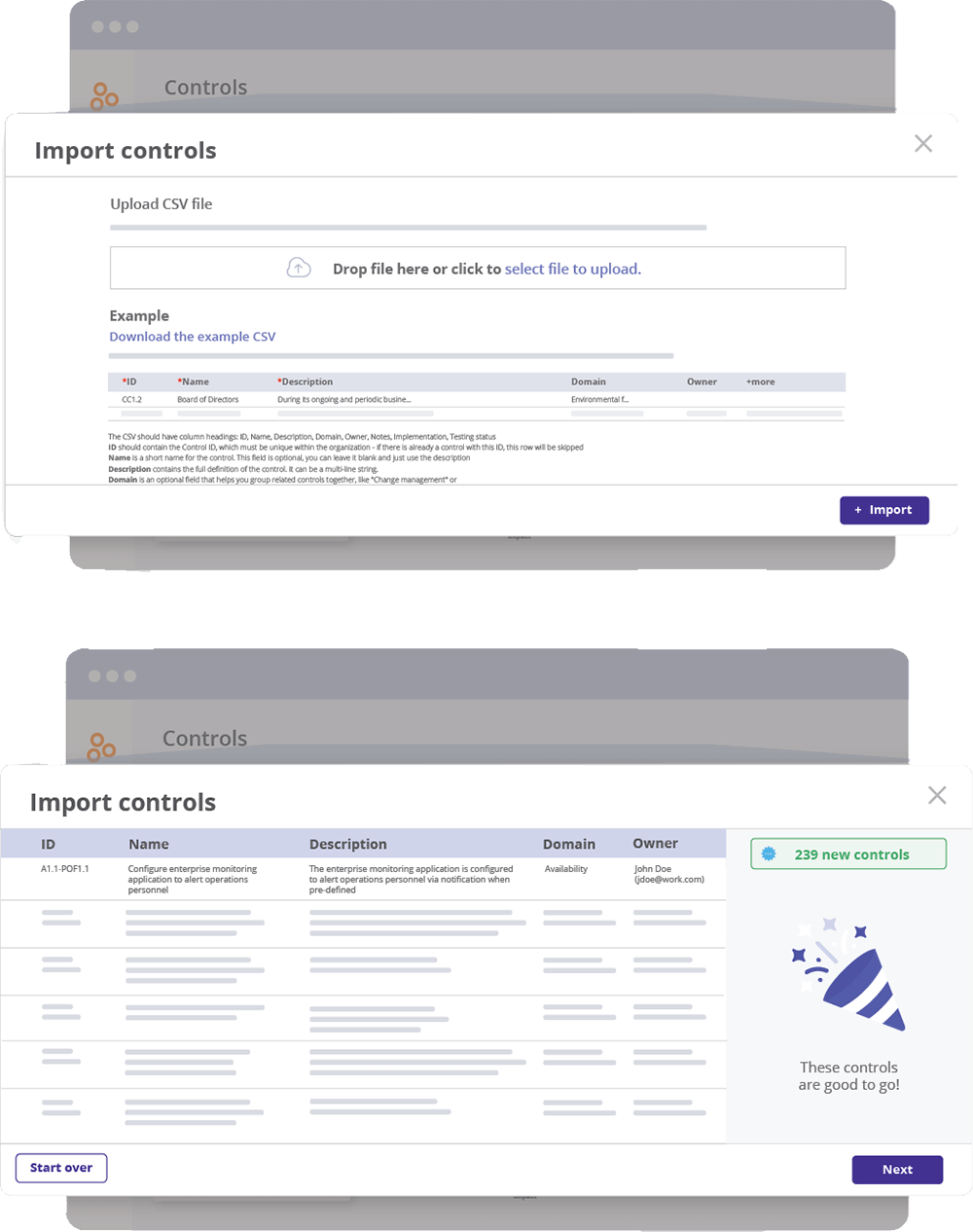
3. Verify data accuracy post-upload
After uploading the data, review the entries in Hyperproof to ensure that everything has been imported correctly. Check for any discrepancies or missing information and address them promptly.
4. Link evidence to controls
Link evidence to relevant controls and tasks within Hyperproof, ensuring that all necessary documentation is easily accessible within the platform.
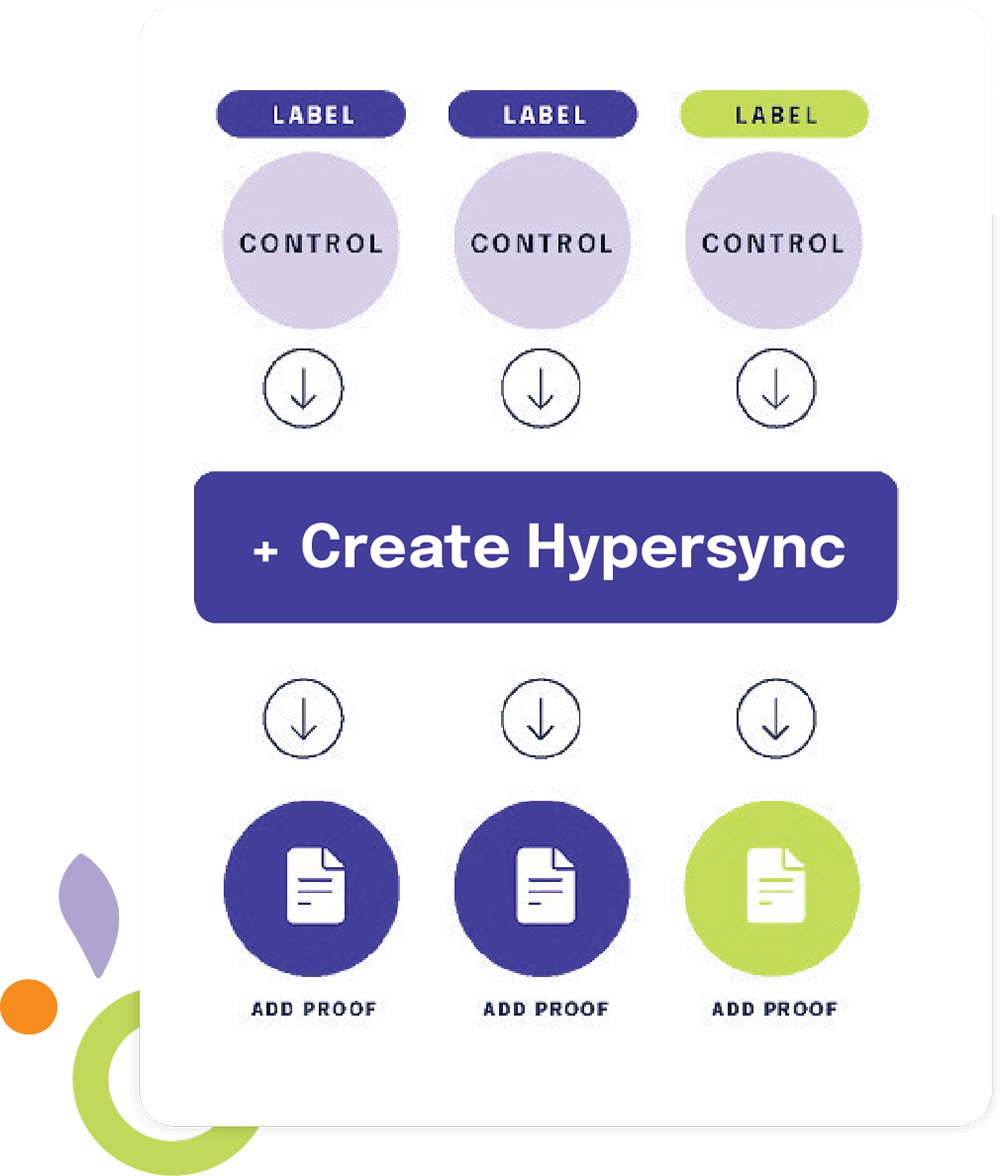
*Note: Select areas may require Excel format. Your implementation consultant or self-guided implementation training course will help you through this process.
Implementing Hyperproof

Once your data is exported from your legacy GRC system and imported into Hyperproof, the next step is to set up Hyperproof, customize it to your organization’s needs, and train users to use the system effectively. Your CSM will be with you every step of the way to help with this process for support and guidance.
How to set up Hyperproof
Setting up Hyperproof involves configuring the platform’s settings to align with your organization’s compliance processes and objectives.
Configure user roles and permissions
Define roles and assign permissions to ensure that team members have the appropriate level of access to the system based on their responsibilities.
Set up notifications and alerts
Customize notification settings to ensure that users receive timely alerts about important compliance tasks, deadlines, and issues.
Integrate with other systems
If your organization uses other software tools for compliance, risk management, or audit processes, integrate them with Hyperproof to create a seamless workflow.
Customizing controls and frameworks according to organizational needs

One of the key benefits of Hyperproof is its ability to customize controls and frameworks to fit your organization’s specific requirements.
Tailor controls to compliance frameworks
Modify or create controls that align with your organization’s various compliance frameworks, programs, and certifications.
Upload custom frameworks
If your organization operates in a unique regulatory environment, upload a custom framework to Hyperproof that meets your specific needs.
Standardize control operations
Implement consistent control operations across your organization’s products or business units to reduce redundancy and improve efficiency.
Best practices for training and onboarding team members

Provide comprehensive training
Offer training sessions that cover all aspects of the platform, from basic navigation to advanced features. Hyperproof’s training resources, including video tutorials, guides, and our best-in-class Support team can help with this process.
Onboard users in phases
Gradually onboard users to the platform, starting with key stakeholders and expanding to broader teams. This phased approach helps ensure that everyone is comfortable using the system.
Encourage collaboration
Promote collaboration between different areas of your business, like audit, risk management, and compliance teams, to ensure that Hyperproof is used effectively across your organization and prevent silos.
After implementing Hyperproof
The transition to Hyperproof doesn’t end with implementation. To maximize the value of your new GRC platform, continuously monitor and optimize performance, gather feedback, and ensure ongoing support and training for users.
Continuous monitoring and optimization
After the initial implementation, regularly monitor the system’s performance to identify any areas that require optimization.
Track compliance metrics
Monitor key metrics, such as the time taken to complete compliance tasks, the number of issues identified, and user satisfaction levels.
Identify opportunities for improvement
Use the data collected to identify areas where the system can be improved, such as streamlining workflows or adding new integrations.
Update controls and frameworks
As regulations evolve, ensure that your controls and frameworks are updated to reflect the latest requirements.
Gathering feedback and making necessary adjustments
Regularly gather feedback from users to understand their experience with Hyperproof and identify any challenges they may be facing. Use this feedback to make necessary adjustments to the system, such as refining workflows, adding new features, or providing additional training.
Ensuring ongoing support and training for users
To keep your team members engaged and proficient in using Hyperproof, provide ongoing support and training. This can include:
Dedicated customer support
Hyperproof offers dedicated customer success managers (CSMs) and account managers (AMs) who can provide ongoing support, answer questions, and help you get the most out of the platform.
The Hyperproof Community
Encourage users to participate in Hyperproof’s user community, where they can share tips, ask questions, and learn from other organizations using the platform. The community also features monthly workshops on helpful topics such as how to stand up a program and link controls, audit best practices for continuous compliance operations, what new features are available in Hyperproof, and more!
Why choose Hyperproof?
Transitioning to a modern GRC solution is crucial, but it’s equally important to choose a platform that not only meets your current needs but also scales with your organization as it grows. Hyperproof is designed to provide the flexibility, scalability, and ease of use that today’s organizations require for seamless compliance operations and effective risk management. Legacy GRC systems are no longer sufficient in today’s complex regulatory environment—they are often inflexible, difficult to scale, and challenging to integrate with other systems.
These outdated systems can create a lot of noise and manual processes, giving the false impression that work is getting done. In reality, they expose your organization to more vulnerabilities because the manual, error-prone processes make it difficult to track compliance effectively. Hyperproof operationalizes your workflows, ensuring that compliance and risk management are done the right way.

Unlike legacy solutions, which don’t allow controls to be linked to risks, Hyperproof maximizes workflows by enabling you to map controls across frameworks. You can also assign control owners to product lines, entities, geographies, or specific groups with scopes—capabilities that other platforms on the market often lack.
Hyperproof also allows you to meet others where they are by integrating with the task management tools they already use, like Jira, Asana, and ServiceNow, promoting a seamless and uninterrupted work environment.
Modern GRC solutions like Hyperproof offer a more adaptable, user-friendly, and efficient way to manage compliance and risk, ensuring that your organization can keep up with evolving regulatory requirements.
Plus..
By transitioning to Hyperproof, your organization will be better equipped to manage compliance, reduce risk, and achieve its strategic goals in today’s fast-paced business environment.
Download the PDF












